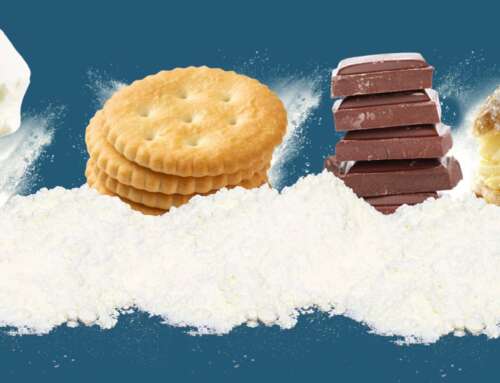There’s lots of talk on the internet and among health experts about the many benefits of kefir. Kefir is a fermented milk drink containing bacteria and probiotics that work to improve our health in a range of ways. Hailed by pundits as a superfood and much praised by scientists and nutritionists, kefir is said to help with everything from digestive issues to bone health, cholesterol, weight loss, and more. Some studies show that consuming kefir may even help to prevent certain types of cancer.
Despite all the recent excitement surrounding kefir, this unique concoction isn’t a new product. The fascinating history of kefir stretches back hundreds of years. Join us as we look at what kefir is, how it’s made, explore its origins, and look at the health benefits of this remarkable fermented milk drink.
Kefir: a fermented milk drink
Kefir is pronounced as ‘kee-feer’ and is sometimes spelled kefier or kephir. The name itself is said to derive from the Turkish word ‘keif’ which loosely translates to ‘feeling good.’ Kefir is traditionally taken at any time of the day or with breakfast, lunch or dinner. It is popular as a traditional health supplement throughout Russia, Ukraine, Asia, Scandinavia, and Eastern Europe.
Let’s start with the basics: what is kefir exactly? Kefir is a fermented milk drink with a sour, tangy flavour with a touch of sweetness. Kefir has a thin consistency which makes it drinkable. It is similar in consistency to yoghurt, and many people do confuse the two products. While it’s true that kefir and yoghurt are both cultured dairy products, kefir has a slightly sweet, tangier taste and contains higher levels of health-giving probiotics than yoghurt. Kefir is also often confused with the yoghurt drink ayran, but again, kefir is quite different. While ayran is derived from yoghurt, kefir is made from milk. Kefir also has a sweeter taste than the saltiness of ayran.
How is Kefir Made?
To make kefir, special grains known as kefir grains are added to milk and left to ferment in a sterilised vessel, which can be an industrial vat or a simple glass jar with a cloth cover. Traditionally, kefir grains were mixed with milk in a goatskin bag and hung outside near the front door. The fermentation process takes anywhere from 18 to 24 hours. When the milk has become thick, then the kefir is ready. Kefir can be made using sheep, cow, or goat milk. It is even possible to make water kefir, known as tibicos. Dairy versions of kefir are much more popular than water kefir and have different health-supporting probiotics.
Kefir’s uniqueness comes from the special properties of the kefir grains themselves. Kefir grains are small gelatinous balls that are white in colour. They look a little like cottage cheese. Despite the name, kefir grains are not grains at all. Kefir grains are lumps of yeast, bacteria, and various other microorganisms. These microorganisms are symbiotic, meaning they don’t need any food source to survive on their own. However, when the kefir grains are mixed with milk, the yeast and bacteria feed on the milk and begin to multiply. This starts the process of fermentation.
You can, of course, buy kefir grains, but you cannot manufacture them. Kefir grains are a natural substance and cannot be produced synthetically. You have to grow kefir grains organically. Scientists believe that kefir grains were discovered by accident and resulted from continually adding and removing milk from containers made of animal skins.
The Amazing Origins of Kefir
Kefir has been consumed for thousands of years. Traces of kefir were found in a 4,000-year-old Chinese tomb. However, historians credit the spread of milk kefir throughout the world to the tribespeople of the North Caucasus, a mountainous region located between Russia and Georgia.
Legend has it that kefir grains were bestowed upon a Northern Caucasian tribe known as the Karachai by the Prophet Mohammed some 2,000 years ago. Kefir grains become known as the ‘seeds of the prophet’ and were regarded as magical. The more scientific explanation is that goat herders, farmers and shepherds stumbled across kefir grain production when transferring milk from leather pouches.
Regardless of how it came about, the tribespeople of the Caucasus kept kefir grains a closely-guarded secret. To speak to outsiders about kefir grains or to give them to anyone was a serious crime and a religious sin. In the late 1800s, Russian doctors began to investigate the longevity of the Caucasus tribespeople. They attributed the good health of the Caucasus peoples to the wonders of kefir. Unfortunately, Russian scientists could not grow kefir and were unable to obtain kefir grains from the tribespeople. So, they turned to espionage.
A young woman maned Irina Sakharova was sent on a mission to North Caucasus. Irina aimed to charm Prince Bek-Mirza Barchorov of the Karachai and convince him to give her the secret of the kefir grains. The prince refused but was smitten by the young woman. When Irina tried to leave the prince had her kidnapped and brought back to his court. This act caused a major scandal which resulted in the prince having to give up the secret of kefir grains as punishment.
By the 1930s, milk kefir was being produced on an industrial scale in Russia and was used by the medical community to treat a range of illnesses. Although widely popular in Russia, Ukraine, Turkey, Scandinavia, and Eastern Europe, it took until the 1960s for kefir to become available in Western countries.
How Do You Use Kefir?
Typically, most people enjoy fermented milk kefir as a probiotic health drink. Milk kefir is commercially available in a range of flavours or as an unflavoured drink. There are other ways to use kefir, however. Some people substitute kefir for yoghurt in smoothies, some use kefir to make parfaits, and others use kefir as a salad dressing.
It is also possible to cook with kefir. Plain, unflavoured kefir can be used to add tang to mashed potatoes, soups, or dips. Kefir can also be used as a substitute for buttermilk in baking recipes.
Kefir Nutritional Information
A standard 268-gram cup of unflavoured kefir contains approximately:
- 10 grams of protein
- 2 grams of fat
- 2 grams of saturated fat
- 13 milligrams of cholesterol
- 390 milligrams of calcium
- 90 micrograms of vitamin A
- 12 grams of carbohydrates
- 12 grams of sugar (flavoured kefir may have higher sugar levels)
What Are the Health Benefits of Kefir?
Fermented milk kefir drink has a wide range of truly astounding health benefits. Kefir has over 30 unique types of probiotics that studies show can improve gut health and aid in digestion. This is because kefir contains an essential amino acid called tryptophan. This amino acid assists the body in processing food through the digestive tract. Probiotics are also helpful in relieving symptoms of constipation.
The health-giving bacteria contained in kefir are known as lactobacillus. Lactobacillus assist our immune systems in fighting off harmful bacteria. Some studies show that the bacteria in kefir can improve cardiovascular health. Studies also show that probiotic drinks can lower the bad types of cholesterol in our bodies.
Kefir is low in lactose, so it’s ideal for people who are lactose intolerant. Kefir yeast bacteria actually work to break down lactose, so while the idea of a milk drink being virtually lactose-free may seem strange it’s actually true. The fermentation process drastically reduces the amount of lactose in kefir so it can end up being 99% lactose-free.
The high levels of calcium in kefir help with bone density and protects the body against bone diseases like osteoporosis. Some studies have shown that kefir may be helpful for people trying to lose weight. In one controlled study, scientists were able to show that the probiotics in fermented milk kefir may have a positive effect on the body’s ability to lose fat. More study is needed in this area, but there does seem to be a connection between probiotics and weight loss.
Scientists are also studying the potential anti-inflammatory effects of kefir. It is possible that kefir can lower inflammation, which is linked to arthritis and heart disease. As well as the anti-inflammatory effects of kefir, scientists also believe it has cancer-fighting properties. The vitamins and amino acids in kefir help to boost cells in the immune system and ward off colon, breast, skin, and prostate cancer. Scientific study is continuing on the ability of kefir to reduce cancer cells.
What Does the Global Kefir Market Look Like?
The global kefir market is expanding at a rapid rate as the benefits of this unique fermented milk drink become more widely known and consumer demand increases. In 2022, the kefir market was estimated to be worth US$1.75 billion. By 2023, this figure had reached $1.87 billion. This gives the worldwide kefir market a compound annual growth rate (CAGR) of 6.9%. The global kefir market is expected to reach $2.44 billion by 2027. A large part of this expansion is due to the popularity of kefir in countries where it is not traditionally consumed. The Chinese market for kefir, for example, is to reach $526.8 million by 2026. Other major non-traditional emerging markets for kefir include the US, Japan, Canada, and Germany.
Kefir can be included in healthy and dairy beverages with high added-value proteins such as Promilk®
Sources
https://www.sciencedirect.com/topics/food-science/kefir
https://www.nourishmeorganics.com.au/blogs/nmo-gut-health-journal/is-kefir-good-for-cancer-patients
https://www.sciencedirect.com/science/article/pii/S0753332220311665
https://pubmed.ncbi.nlm.nih.gov/12728216/
https://pubmed.ncbi.nlm.nih.gov/22529959/
https://www.webmd.com/diet/kefir-good-for-you
https://health.clevelandclinic.org/benefits-of-kefir/
https://www.rawmilkinstitute.org/updates/the-fascinating-history-of-milk-kefir
https://revolutionfermentation.com/en/blogs/milk-kefir/the-fascinating-origins-of-kefir-grains/


